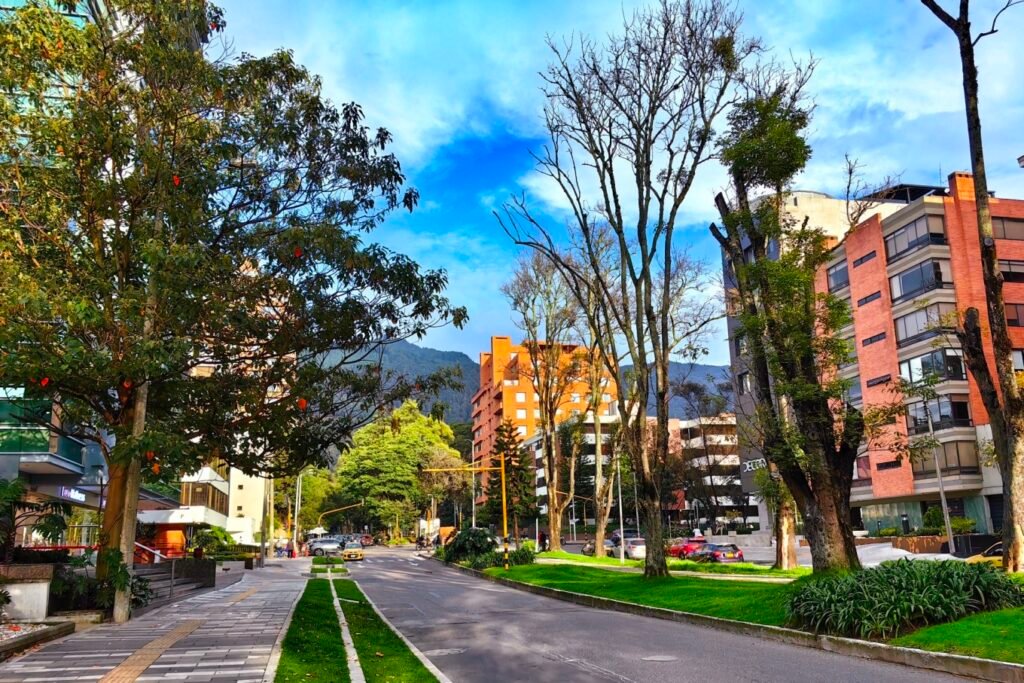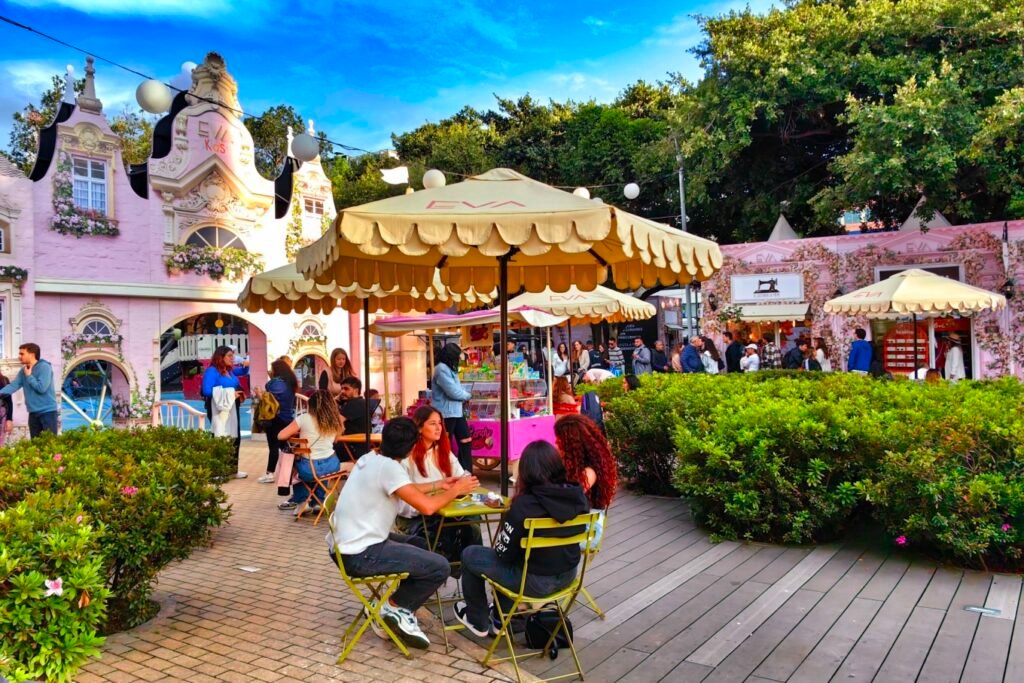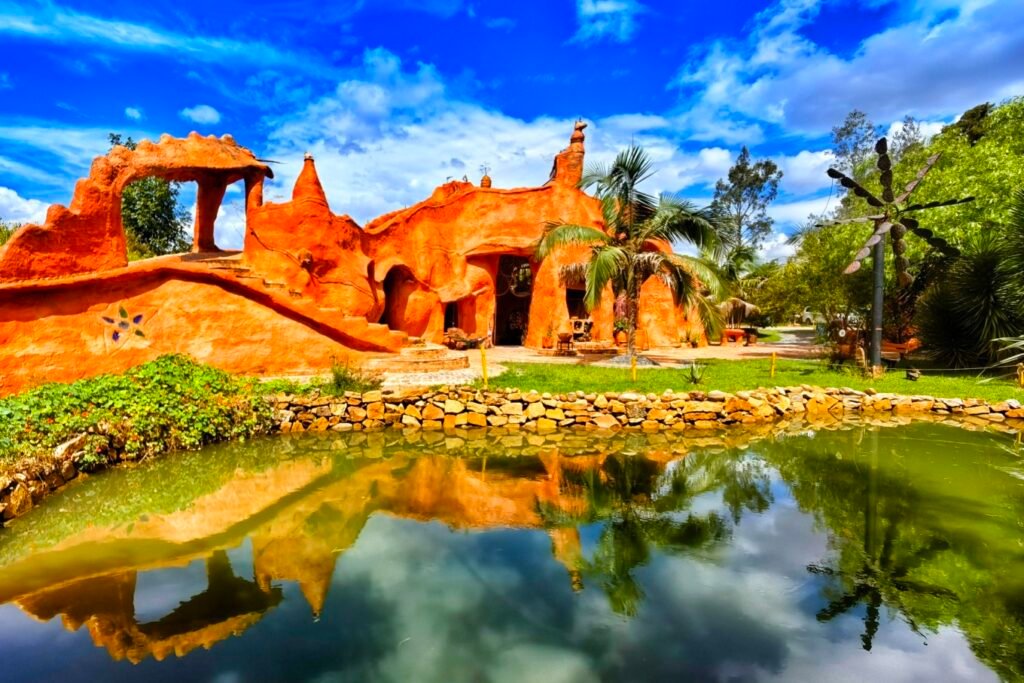Nestled in the towering Andes Mountains, Villa de Leyva enchants visitors from all over the world with its serene charm, whitewashed walls, red-tiled roofs, and vibrant Spanish colonial flair. The scenic route from Zipaquirá to Villa de Leyva winds through twisting mountain roads. The morning starts cloudy, but by the time we arrive, the skies are clear and refreshing, setting a perfect tone for exploration.
When traveling, good weather is always a top concern. Though Colombia is in South America and considered a tropical country, its geography connects Central and South America and borders two oceans, giving it a variety of climates. The Pacific coast and southeast have tropical rainforest climates, the northwest has savannas, while Bogotá and the surrounding highlands, where Villa de Leyva lies, have a subtropical forest climate. This area is lush, with abundant rainfall, adding to the breathtaking scenery. Driving along the route, we felt as if we had stepped into a dreamlike painting—mountains rising and falling endlessly, lakes shimmering in the sunlight, green meadows stretching to the horizon, and herds of cows and sheep grazing peacefully. It’s the perfect embodiment of rural South American charm.
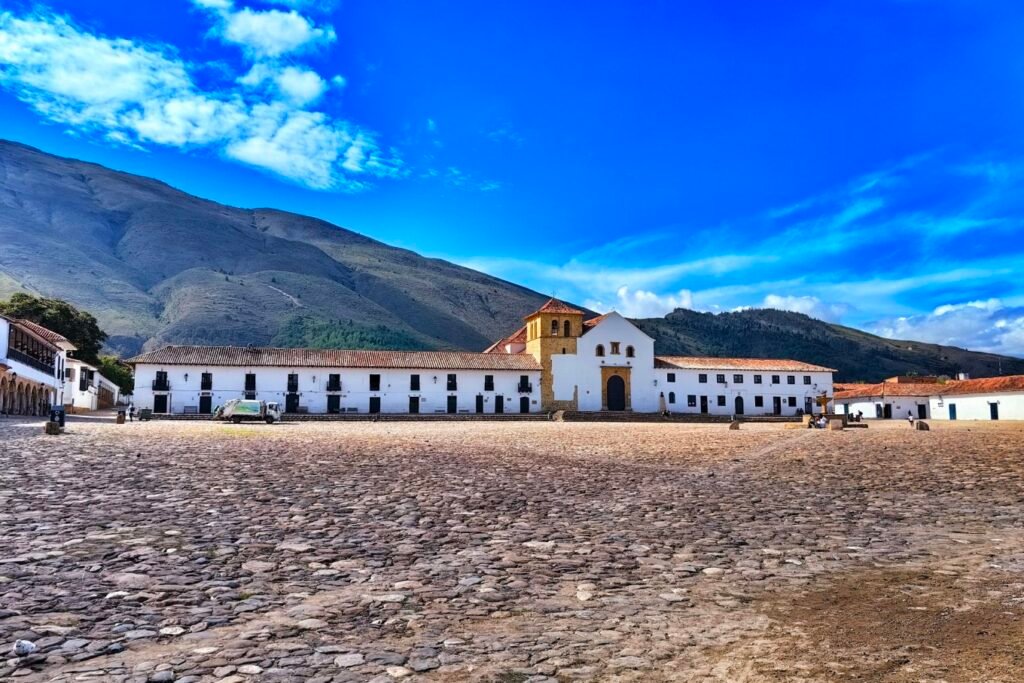
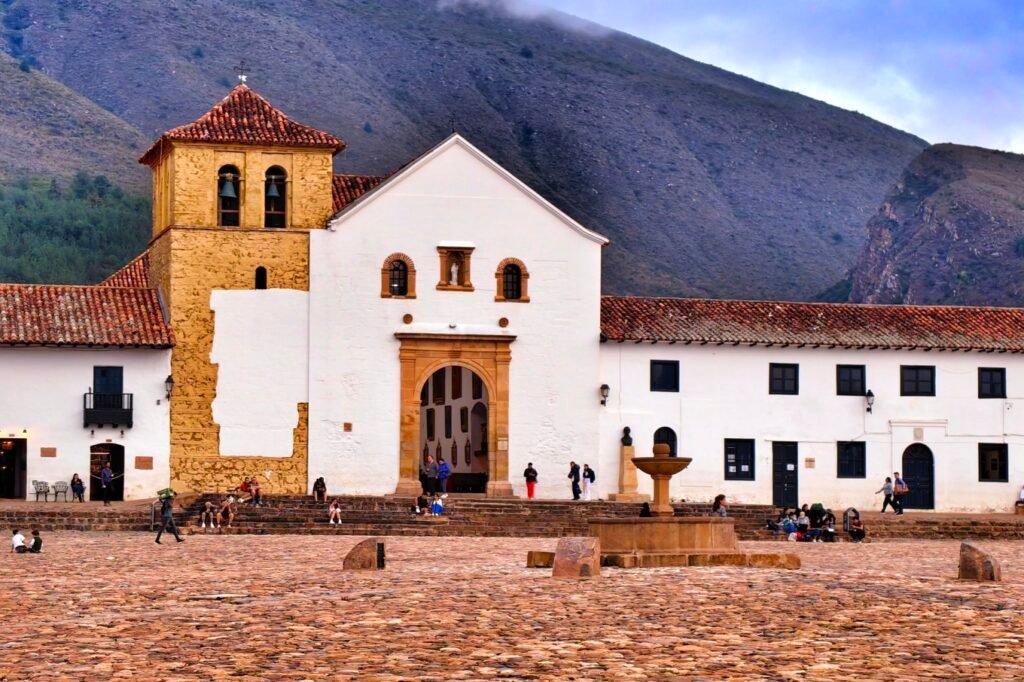
Before we knew it, we arrived in Villa de Leyva. Our first stop was the town’s central hub, the impressive Plaza Mayor. Though the town is relatively small, the plaza is surprisingly spacious, covering over 10,000 square meters. This massive square forms the heart of the town, with our hotel located right on the plaza, directly across from the town hall. After dropping off our luggage, we couldn’t resist stepping out to explore.
The plaza is surrounded by well-preserved colonial-style buildings, including the stately town hall, hotels, restaurants, and museums. One of the most striking landmarks near the plaza is the Iglesia Parroquial (Parish Church), a charming, centuries-old church that dates back over 400 years, matching the town’s founding history. Villa de Leyva’s many historically significant structures led to it being designated a protected national monument in 1954.
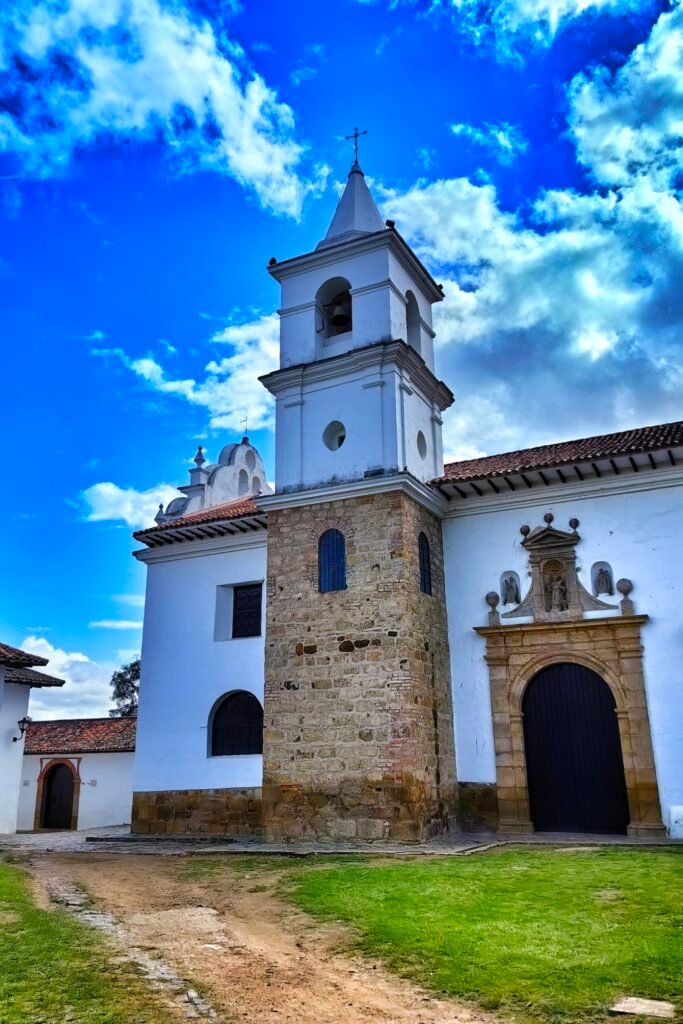
The cobblestone streets are a defining feature of the town, with uneven stones—some even fossilized—paving both the square and surrounding alleys. Strolling through the streets, we were greeted by whitewashed houses with red-tiled roofs, lush greenery, and blooming flowers in courtyards. Walking here feels like traveling back in time by several centuries. Villa de Leyva, one of Colombia’s best-preserved historical towns, attracts not only international tourists but also many Colombians looking for a weekend getaway. The lively atmosphere of holidaymakers added to the town’s festive vibe. Locals, accustomed to a laid-back lifestyle, were often seen lounging in front of their homes or strolling leisurely through the streets, radiating a sense of peace. The town’s relaxed atmosphere is evident in the way things are left untouched—even drinks left outside stores remain undisturbed, a rare sight in South America. It’s truly a place perfect for peaceful, meandering walks.
Though Villa de Leyva feels like it has been frozen in time, it hasn’t been forgotten. Tucked away in a remote highland valley, the town is far from urban noise and major highways. With no precious resources to exploit and little development over the years, it has managed to retain its charm, drawing visitors with its stunning scenery, simple lifestyle, and tranquil atmosphere.
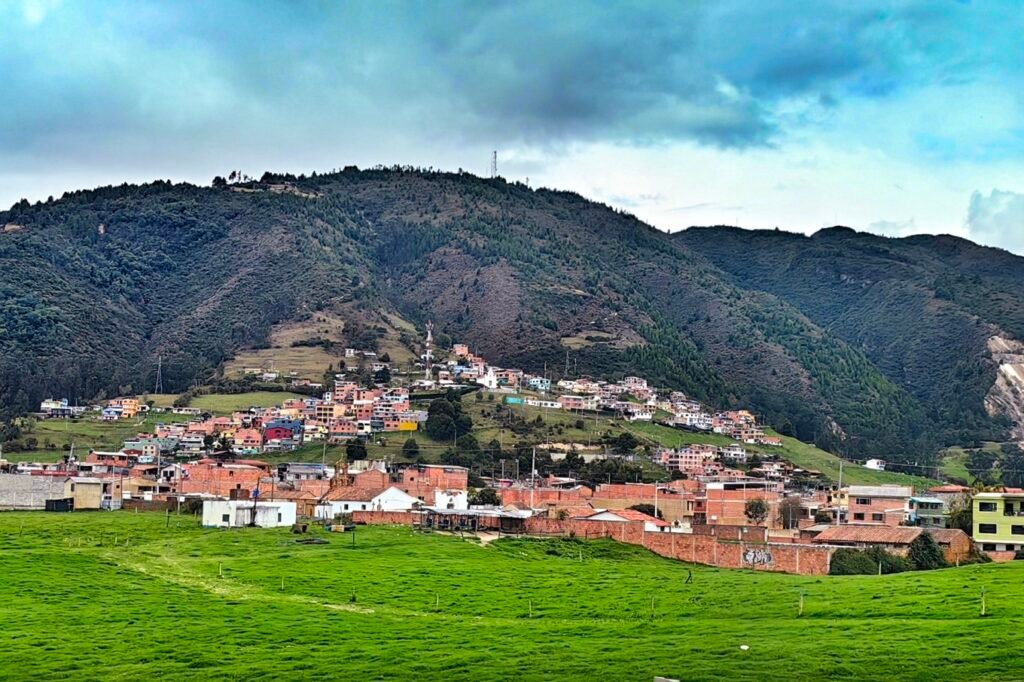
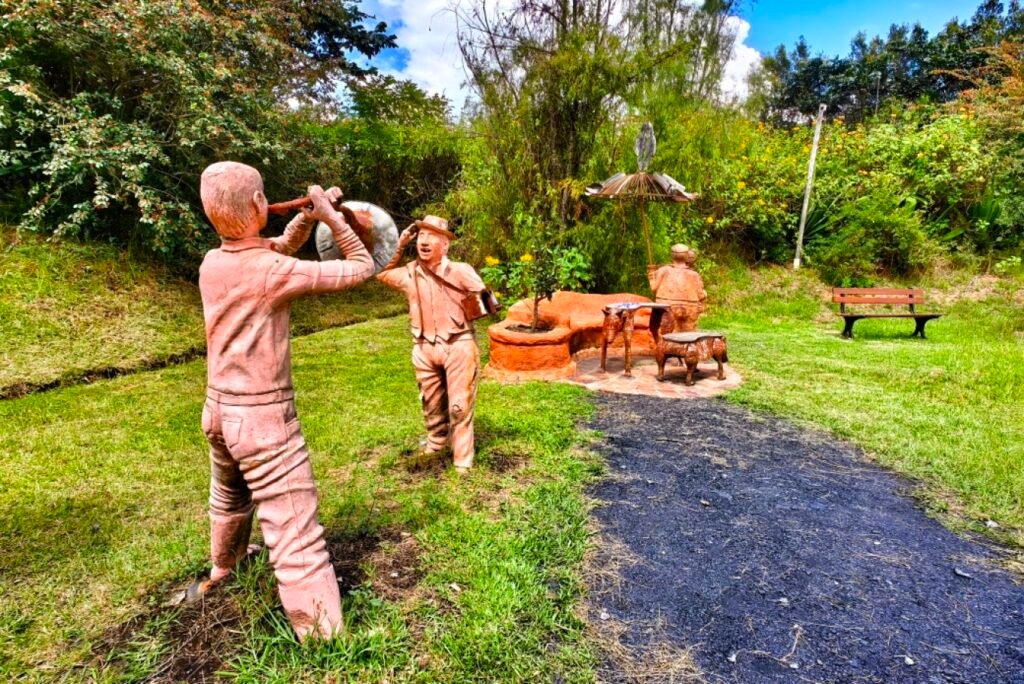
A Town of Surprises and Delights
Villa de Leyva is now a popular tourist destination, with a variety of accommodations available around the plaza and nearby streets, ranging from luxurious hotels to budget-friendly guesthouses. Prices vary widely, from as low as $15 to several hundred dollars per night. The town is filled with restaurants, bars, coffee shops, boutiques, and artisanal stores, with many specializing in local wool products, bamboo crafts, and souvenirs. However, the most popular spots are the chocolate shops, and there’s even a chocolate museum, where visitors can learn about the entire chocolate-making process—from cultivation to production—and indulge in the sweet delights. It’s a perfect way to add a bit of romance to the trip.
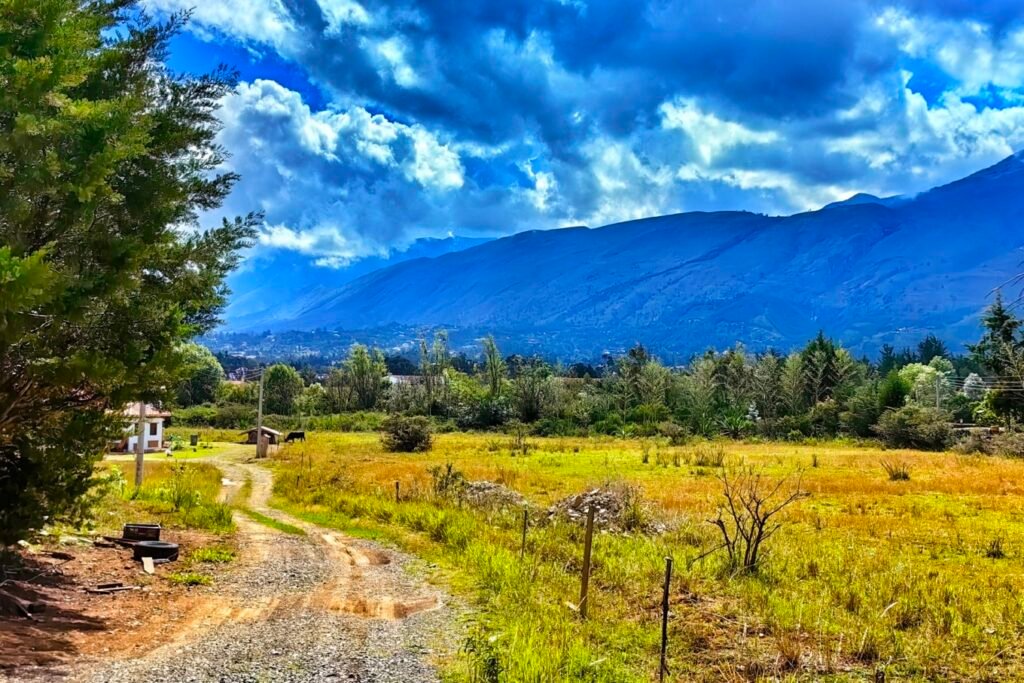
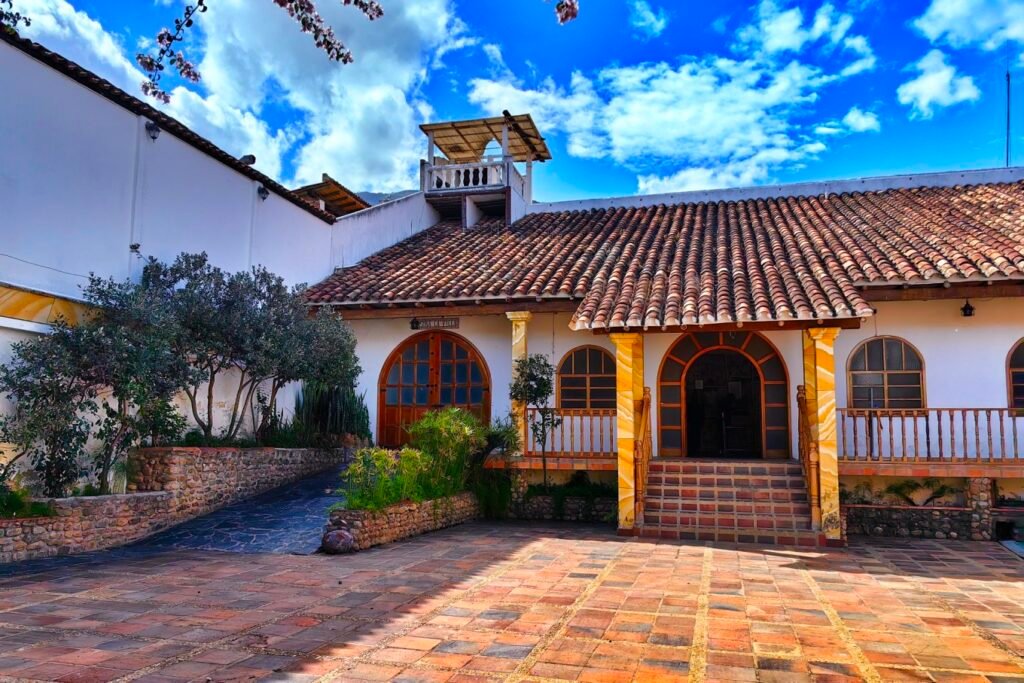
As the afternoon faded into evening, we returned to our hotel and headed to the rooftop terrace, which doubles as a bar and the best viewpoint in town. There, with a cup of locally brewed Colombian coffee in hand, we watched the shifting hues of the sunset paint the town in warm shades of red. It was a moment of pure contentment.
Exploring Beyond the Town: Ceramics and Fossils
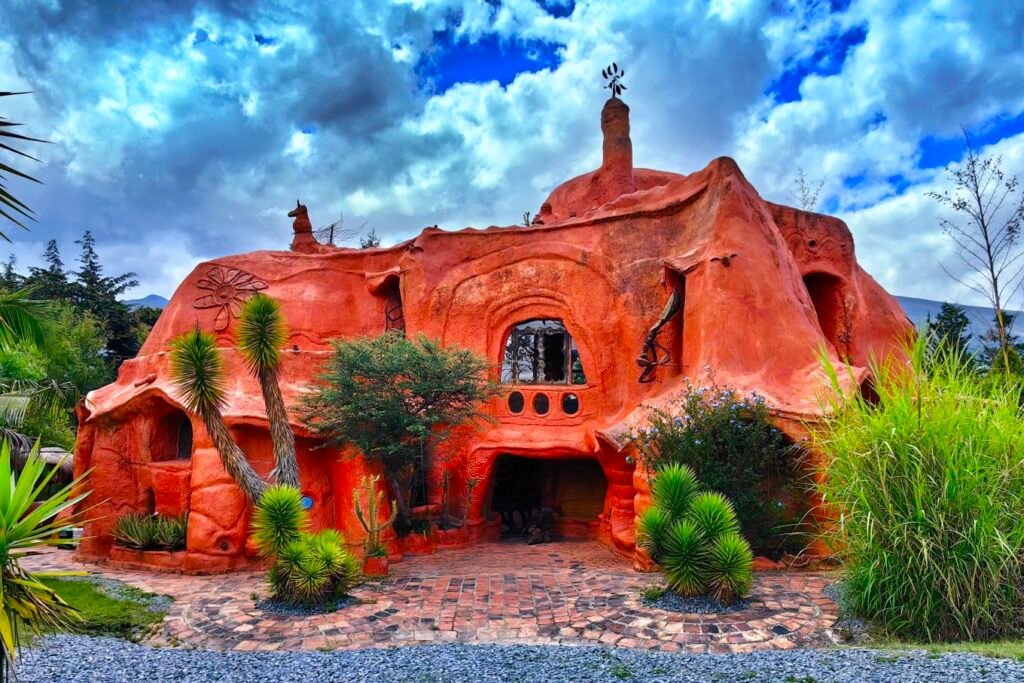

The next morning, we set off to explore two of Villa de Leyva’s most famous attractions: the Casa Terracota and the Fossil Museum.
The Casa Terracota is one of the town’s most iconic landmarks. With the help of locals, we navigated the winding mountain paths and eventually arrived at this remarkable structure nestled in the countryside. Far from being a typical house filled with delicate ceramics, the Casa Terracota is a massive, three-story mansion entirely made of fired clay. It is said to be the largest ceramic building in the world.
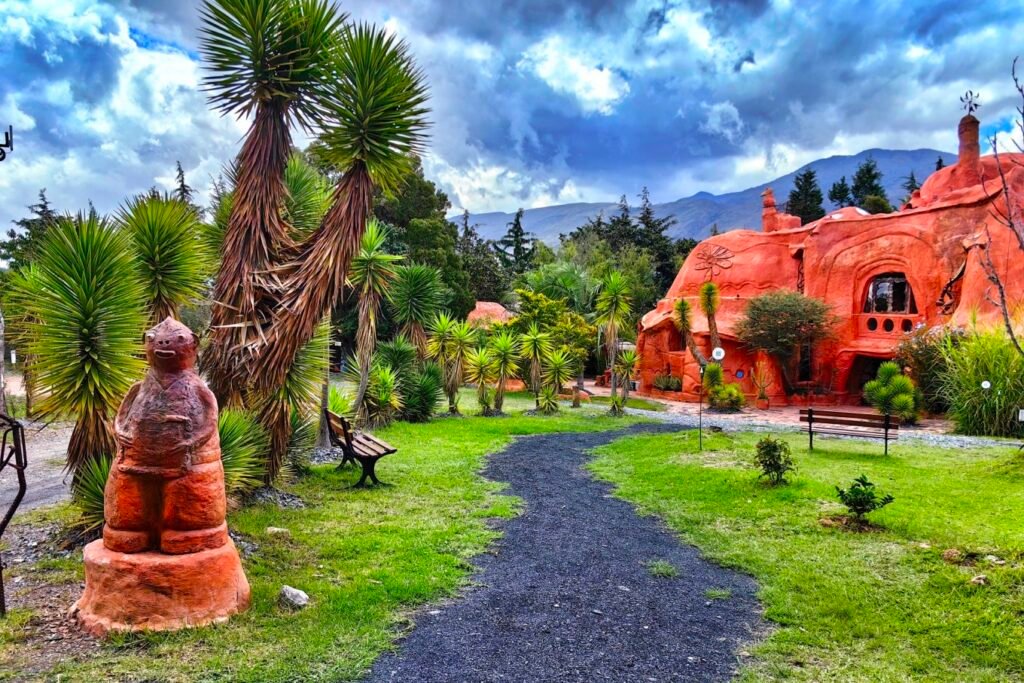
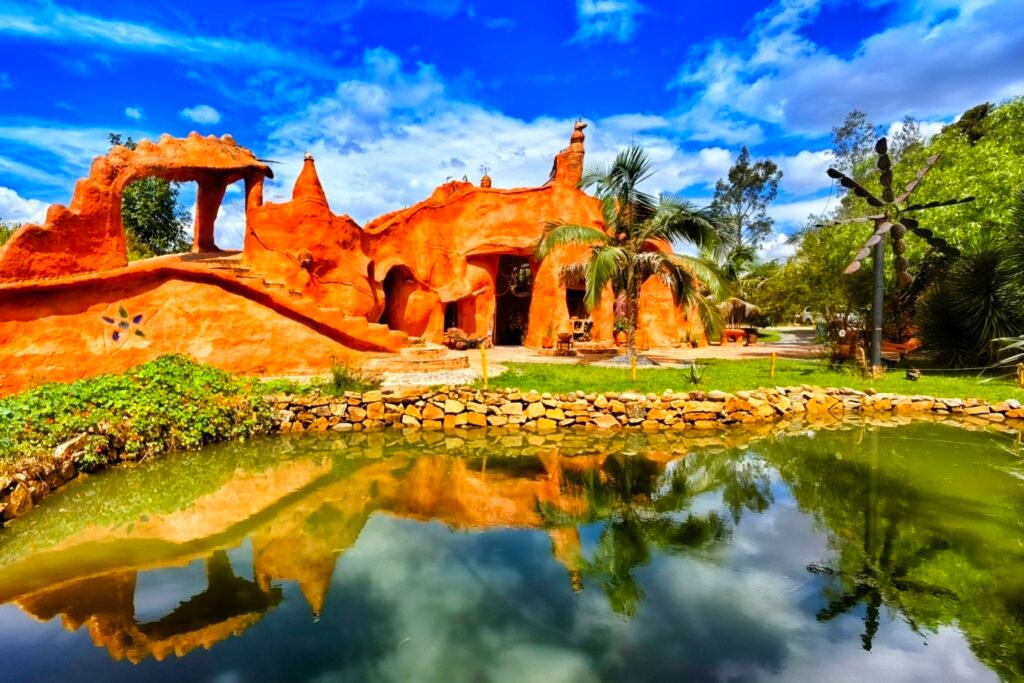
The house’s vivid reddish color and smooth, flowing lines give it a whimsical, almost fairy-tale appearance, reminiscent of the works of Antoni Gaudí. Inside, the walls are left in their natural earthy tones, with blue mosaic tiles decorating the bathrooms. The rooms are furnished with handcrafted decorations, from chandeliers to murals, blending creativity with practicality. The courtyard outside is equally enchanting, with a clear pond reflecting swaying palm trees, making the entire setting feel like a scene from mythology.
Interestingly, this Gaudí-like structure is the work of a Colombian architect who spent 15 years constructing it. Beginning in the 1990s, he built and rebuilt it multiple times—each iteration falling apart until the final version was completed after several trials and storms. Originally intended as a private home, the house’s unique appearance and backstory transformed it into a tourist attraction, now open to the public with tickets priced at 32,000 pesos per person.
Leaving behind the dreamlike Casa Terracota, we headed to the Fossil Museum, a site steeped in history. Located just outside the town, the museum is the largest and most renowned in the area, offering immense cultural and archaeological value. It tells the ancient story of Villa de Leyva, a place that was once a shallow sea before evolving into the highland landscape we see today.
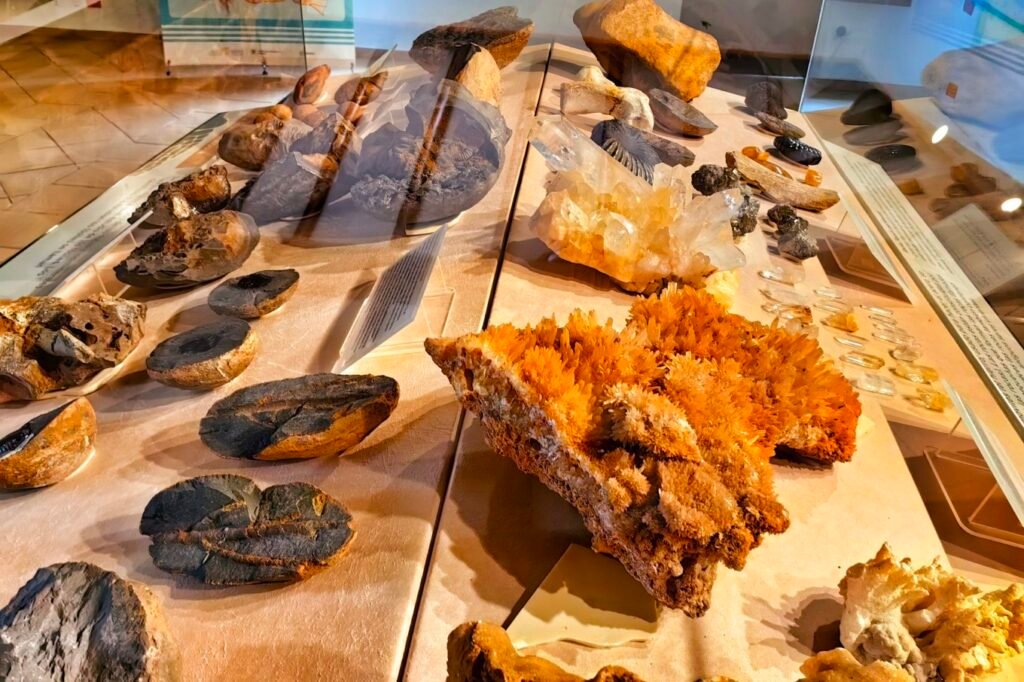
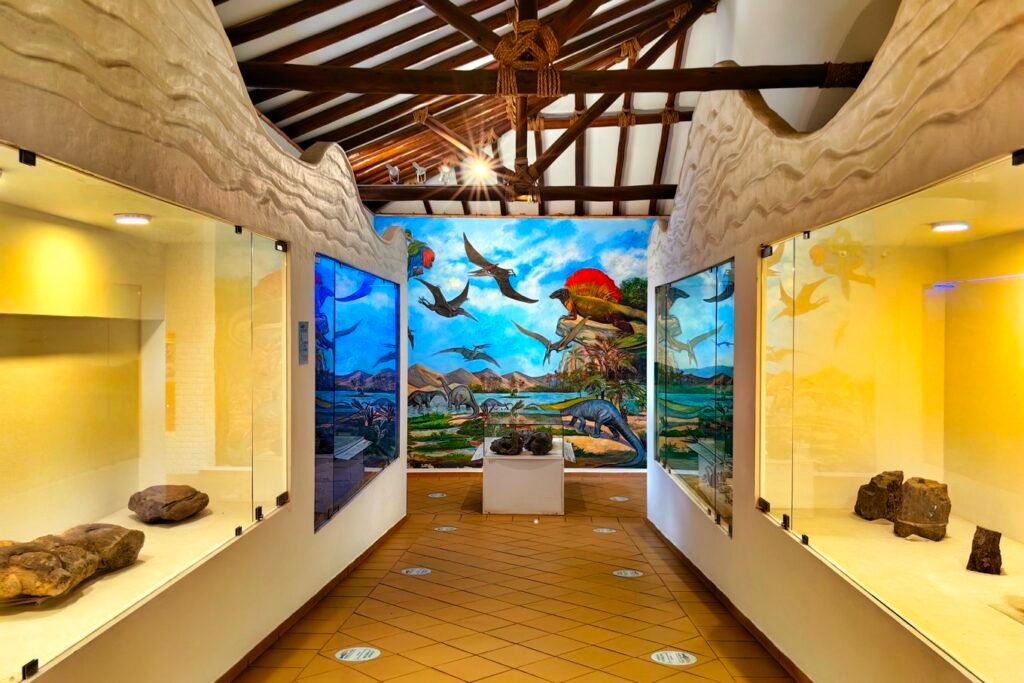
From the moment we arrived, we noticed the connection between the museum and the cobblestone streets we had walked the previous day. Many of the stones used in construction are actual fossils, remnants of prehistoric marine life. Villa de Leyva’s transformation from sea to land left behind a wealth of fossils, which were often used as decorative elements until the accidental discovery of the Kronosaurus skeleton—one of the only known specimens in the world. This discovery sparked archaeological efforts, revealing that Villa de Leyva is one of humanity’s ancient origins.
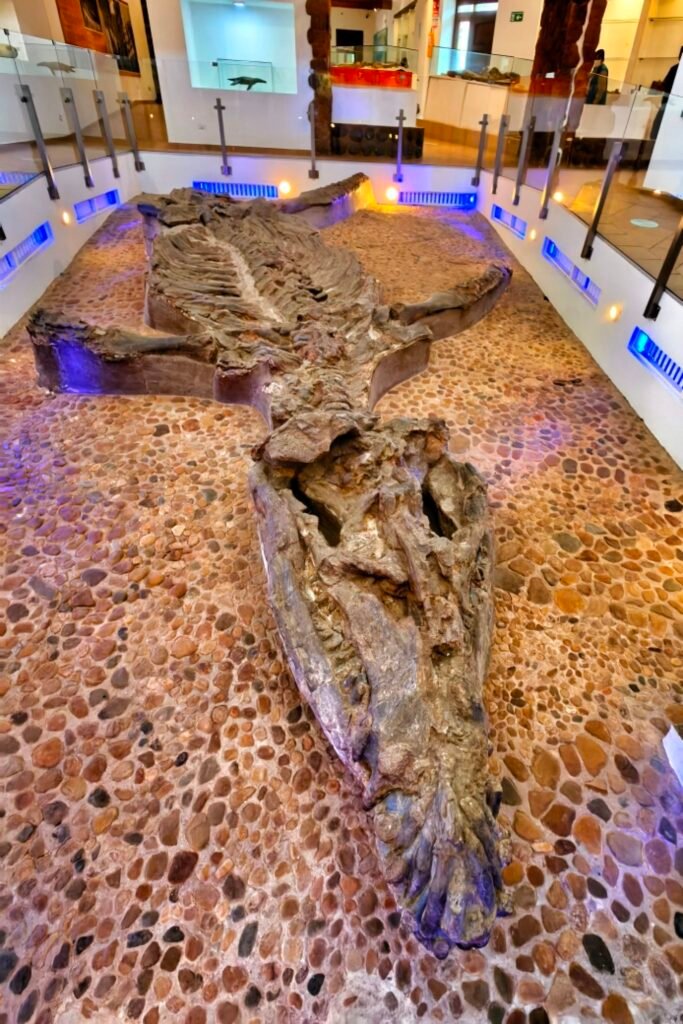
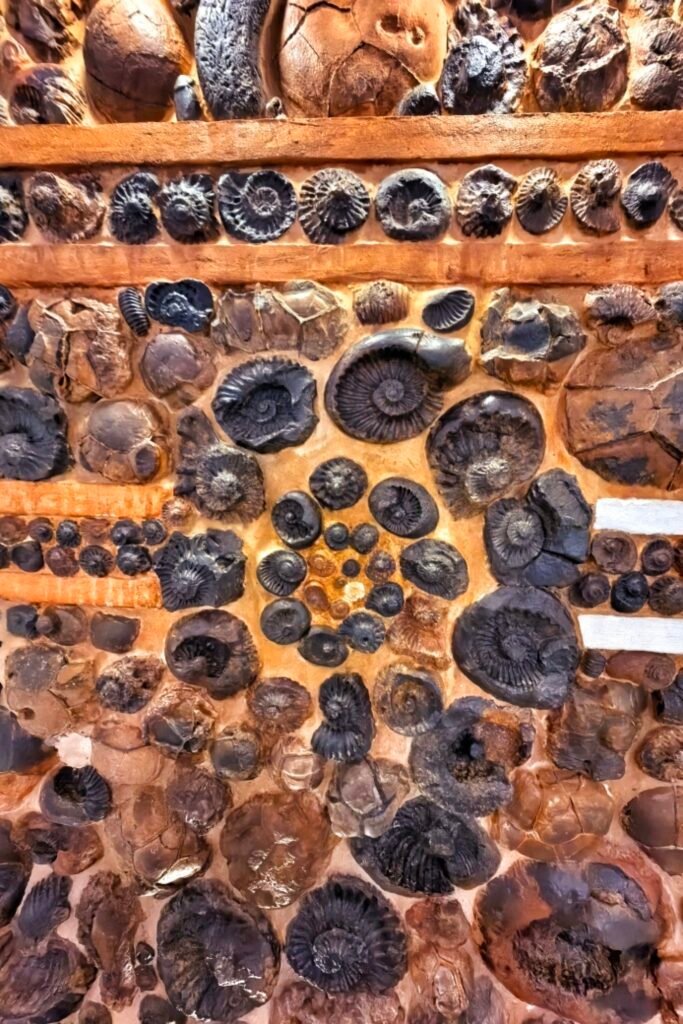
The Fossil Museum, with tickets priced at 20,000 pesos per person, offers a fascinating glimpse into the region’s prehistoric past. Visitors can see the impressive Kronosaurus skeleton up close and learn about the area’s geological transformation and the broader story of human evolution. It’s a captivating and educational experience, well worth the visit.
Villa de Leyva offers a perfect blend of natural beauty, history, and culture, making it a destination full of surprises and unforgettable moments.
